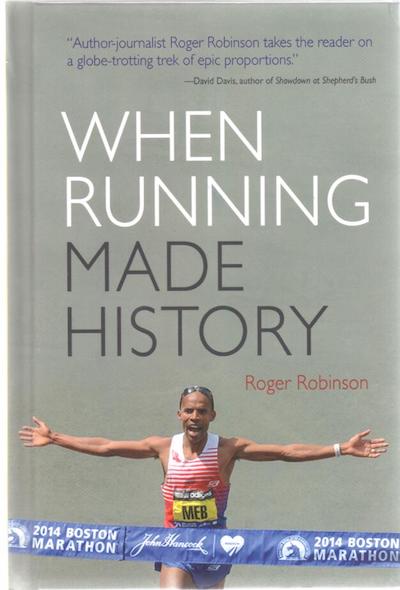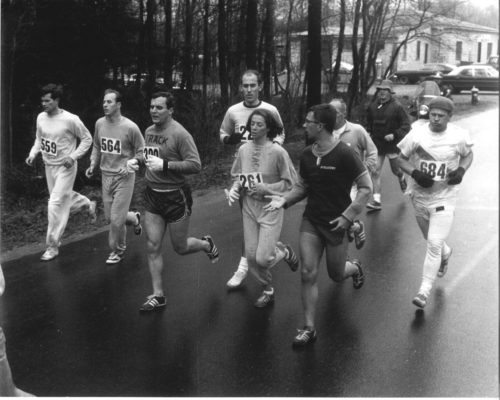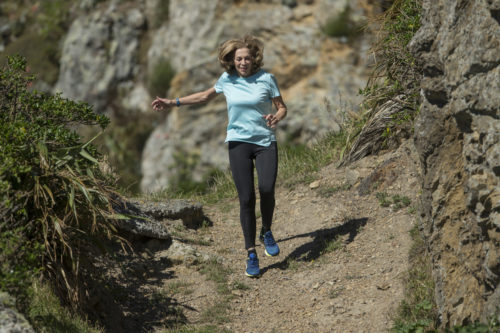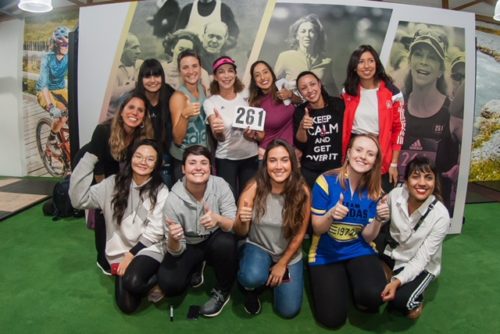On Friday May 3 and Saturday May 4, the Toronto Marathon Race Expo will host speaking engagements with running legends, Kathrine Switzer and Roger Robinson. Switzer’s discussion will include the Canadian kick off for 261 Fearless, the non-profit organization she founded which brings the sport to woman through global running clubs.
Robinson will join two panel discussions on the history of running a topic he has written about extensively and the subject of his latest book, When Running Made History. Robinson will also available for book signings, along with Kathrine at their expo booth. In light of their upcoming visit, we caught up with the couple to find out their perspectives on the running world today including what running means to them now, how they stay inspired and what they believe is next in the sport. 
iRun: How different is the competitive field of runners now, as compared to when you running and competing? Can you give us a snapshot of what it was like for competitive runners at that time versus these days?
Kathrine Switzer: Roger’s new book When Running Made History is the first to tell the story of how a tiny minority sport grew into the global social movement we now know.
Roger Robinson: The big changes are the huge increase in women’s numbers—Thanks to Kathrine and also detailed in her book Marathon Woman—the inclusion of all age groups, and of course sheer numbers.
KS: Roger gives eyewitness narratives from his childhood on, showing how running used to be track meets where six men were watched by many thousands. Now many thousands do the actual running. In one word, the key difference is participation—actually doing it, not watching others.
iRun: Is there a moment in time that you would attribute the shift in the sport, from what it was once, to what we know the sport and athletes, in particular distance athletes?
KS: The 1980 Avon Global Women’s Marathon in the series that I organised was the transformative event that led to the inclusion of the women’s marathon in the Olympics. That 1980 race in London is brought to life from two different points of view in my memoir Marathon Woman, and Roger’s definitive When Running Made History.
RR: One other key moment that I witnessed was the 1990 Berlin Marathon, the first after the fall of the Berlin Wall, and the day when running revealed that it has become the world’s “new form of celebration,” as I call it in the book.
iRun: What is your favourite moment or era in running that you think back to and it makes you joyful?

KS: For me, it was the 2017 Boston Marathon, which I ran on my 50th anniversary of the famous 1967 run. It was then I knew the women’s running revolution was an unstoppable empowering movement that will continue to change the world.
RR: My greatest stroke of luck was that I was still running well at age 40, at just the moment when Masters running became established. Free trips! Global championships! Festive big races! All new. The last chapter in my book shows how I enjoyed my mid-life crisis, as well as how important running has been in changing perceptions of age.
iRun: You are both integral to players in the world of running, and have shared history in the sport. What was the point for you both, when you thought you needed to take a role as advocates for the running movement?
KS: I knew when I crossed the finish line of the 1967 Boston Marathon that I had to do what I could do create opportunities for women in running. I knew it would empower them but they didn’t know that. I had to create welcoming events and push for official inclusion—even in the Olympics.

RR: I made important contributions to re-thinking the role of the stadium announcer and presentation at track and field and running events. In When Running Made History, I talk about running’s leadership in the environmental movement which is a place where my writing has been influential since the 1980s. My main role has been showing that running deserves the best possible writing.
iRun: How important is it for you to both have the knowledge and understanding of and passion for running as you both do? How do you help to inspire one another on your paths as speakers, writers and running legends?
KS and RR: It’s profoundly helpful to share ideas and expertise, and on public occasions, like speaking at the Toronto Marathon Expo. We love the fact that we are each 100% reliable, supportive, and inspirational as co-speakers. At the same time, we work completely independently, and Roger’s life as a successful writer, is very different from Kathrine’s as a motivational speaker and activist for the 261 Fearless.
iRun: What is the best thing about this sport, and how has that changed for you over the years you’ve been involved in the sport?
KS: Running has given me everything in my life—health, fitness, career, creative, fearlessness, husband, religion, but most of all, it’s given me myself. When I need to find me again, I go for a run.
RR: Telling the stories and sharing the ideas that help them see how significant their own running can be. I see my role as helping to find the words for something that is so important and creative in so many people’s lives.
iRun: Who could have imagined that marathons would become such a popular movement for men and women worldwide? Did either of you see it coming?
KS: I always knew that the marathon would be popular for women because it is such a big accomplishment. Women are good at it naturally because women excel at endurance. I knew that if I could run a marathon I could do anything and that is how women feel. It transforms them. It was only a matter of creating events that encouraged and welcomed them. Once that was done, they were on their way, knowing they could go further, faster, or do something else they never imagined: better job, more education, better relationships.
RR: As early as 1978 I wrote that, “running is a major social movement of our time.” When Running Made History tracks that whole process, partly from my personal perspective.
iRun: How do you see the next decade of running going? Will elites continue to get faster, is there going to be a tipping point even where we see a decrease in distance running like marathons do you think?

KS: The big marathons will continue to be popular, as they are quite spectacular shows. But I see running expanding hugely into longer events, ultra, trail and mountain runs, and women will often dominate this area. We can run forever.
RR: Two main directions: First, running will become more genuinely inclusive. One chapter of my book is a radical re-think of how we are still mainly a sport for the relatively affluent. Secondly, running will take a stronger leadership role in environmentalism. Running, as my book is entitled, makes history.
iRun: Why do you both continue to be such an incredibly active part of the running community? You’ve both been so inspiring for others, so how do you keep that inspiration going yourselves?

KS: In women’s running particularly, my motivation is because there is still so much yet to do. Most women in the world still live in a fearful situation and running can really give them a sense of hope. Plus it is easy and accessible. My non-profit organization 261 Fearless reaches out to women all over the world with a non-competitive friendly group that helps them take the first step to empowerment. This is what pushes me now: I want this charity to take the next big leap by getting women’s opportunity out there and we are using the Toronto Marathon as our first big step into starting community clubs in Canada.
RR: In a world full of negatives, running is the most positive force I know. Reviewers have called my new book a love poem to running, as well as a significant history. A personal bonus is that being involved in running seems to be a good way of handling the ageing process – or denying it.






 Current Issue
Current Issue Previous Issue
Previous Issue Prior Release
Prior Release
